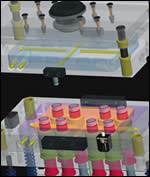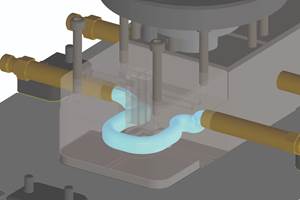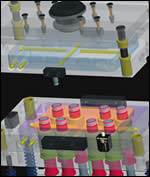Cost and Control Benefits of Permanent Product Traceability
Measuring the value of the right date code insert through your requirements, and its reliability and readability.
Permanent product traceability is a useful and necessary tool in today’s manufacturing environment. Where your products are can be as useful to you as it is to your customer. It helps limit exposure and scrap, should a problem in your or your customers’ process occur.
What seems like a needless extra expense at the outset of a project can save hundreds of times its cost for the control it provides in the long run. Money spent sorting and remanufacturing parts can dwarf this small front-end expense. What you identify on your products can also serve as a very important sales tool if done correctly and presented properly.
Traceability Technology Options
The most common marking is some form of timing of manufacture or material type. What year, month, week or even shift can sometimes be necessary depending on the volume of parts and type of industry.
Other options include agency listing, part numbers and revision levels, to name a few. The ability to accurately replace parts customers need in the future can be a very profitable asset to a company. Also, if you’re really out to make a better part, it should be part of your offering.
Information that does not change is often put on inserts with information stamped or engraved on them used as plugs. These can lead to flashing problems and are not easily removed. Other forms of information change at regular intervals in the manufacturing process.
Inserts with Rotating Centers
Changes in month or shift fall under this category. For these, inserts with rotating centers are often used to keep the mold in the press more. The engraving requirements, however, can become very specialized to suit the needs of the manufacturer at this point. In general, only the more common varieties are available off the shelf. The possible availability of custom engraving in reasonable quantities and pricing becomes a great asset.
Threaded Insert
The standard type of rotating insert uses some form of threaded insert to enable the user to unscrew the center to change it in the press. For areas of blind holes, this is about the only alternative. There are various designs to keep the center flush with the outer ring and tight to prevent unintended turning during operation. For molding environments under 300oF, this is a very useful tool.
The difficulty comes with other environments. High temperature plastics and rubber injection environments produce mechanical challenges for the threaded portion of the inserts. The necessary clearance for manufacturing tolerances between the inner and outer rings makes them susceptible to flash and fluid migration. If something happens to the threads in the system, there is no way to repair the inability to turn it as required.
Rear-Loading Date Code Insert
An option to this style is a rear-loading date code insert. Due to construction design, the tolerances between the inserts can be far more precise. Without threads or as much of a tendency to flash, the possibility for a longer service life is quite possible.
While they cannot be changed from the front, most inserts are not changed very often—if at all—as long as they do their job. Threaded inserts for month and year identification come out of the mold and have to be repurchased to finish the year. Getting the year on such an insert can be tricky depending on the time of year.
Summary
As with all mold components that can enhance the value and traceability of a molded part, your requirements affect your choices. Flexible engraving options, when available, also are very effective tools. Whether a solid plug, threaded front load or non-threaded rear load, the important aspect to realize is that you do have choices that can work for you.
Related Content
Building Molds: Most Popular Reads of 2024
Dive into the most-viewed content for building your mold, including topics such as cutting tools, EDM, hot runners, additive manufacturing, mold materials, machining and mold components.
Read MoreTips for Tackling Mold Design, Machining, Cutting Tool and Wear Challenges
Tips for tasks ranging from reducing risk in part design and taking advantage of five-axis machining to refining cutting tool performance and reducing wear with guiding and centering systems.
Read MoreHow to Supply Cooling to Additive Tooling
Additive tooling provides limitless options for cooling a mold’s difficult-to-cool areas.
Read MoreThe Lowdown on Guided Ejection Systems
Learn more about guided ejection systems in terms of when, where, how and why to use them to benefit you as the moldmaker. Use this guide to better understand best practices associated with guided ejection systems.
Read MoreRead Next
The Advantages of New Modular Tech: Maximizing ROI and Minimizing Risk
Proven off-the-shelf modular mold components and complete component systems meet today’s demanding drive for a lean approach.
Read MoreAutomated In-Mold Marking for Plastic Injection Mold Tools
The importance of plastic part traceability and how to achieve it.
Read MoreDon’t Build the “Same Old Same Mold”
Steps for evaluating the latest mold innovations in order to move along the evolution process.
Read More




















